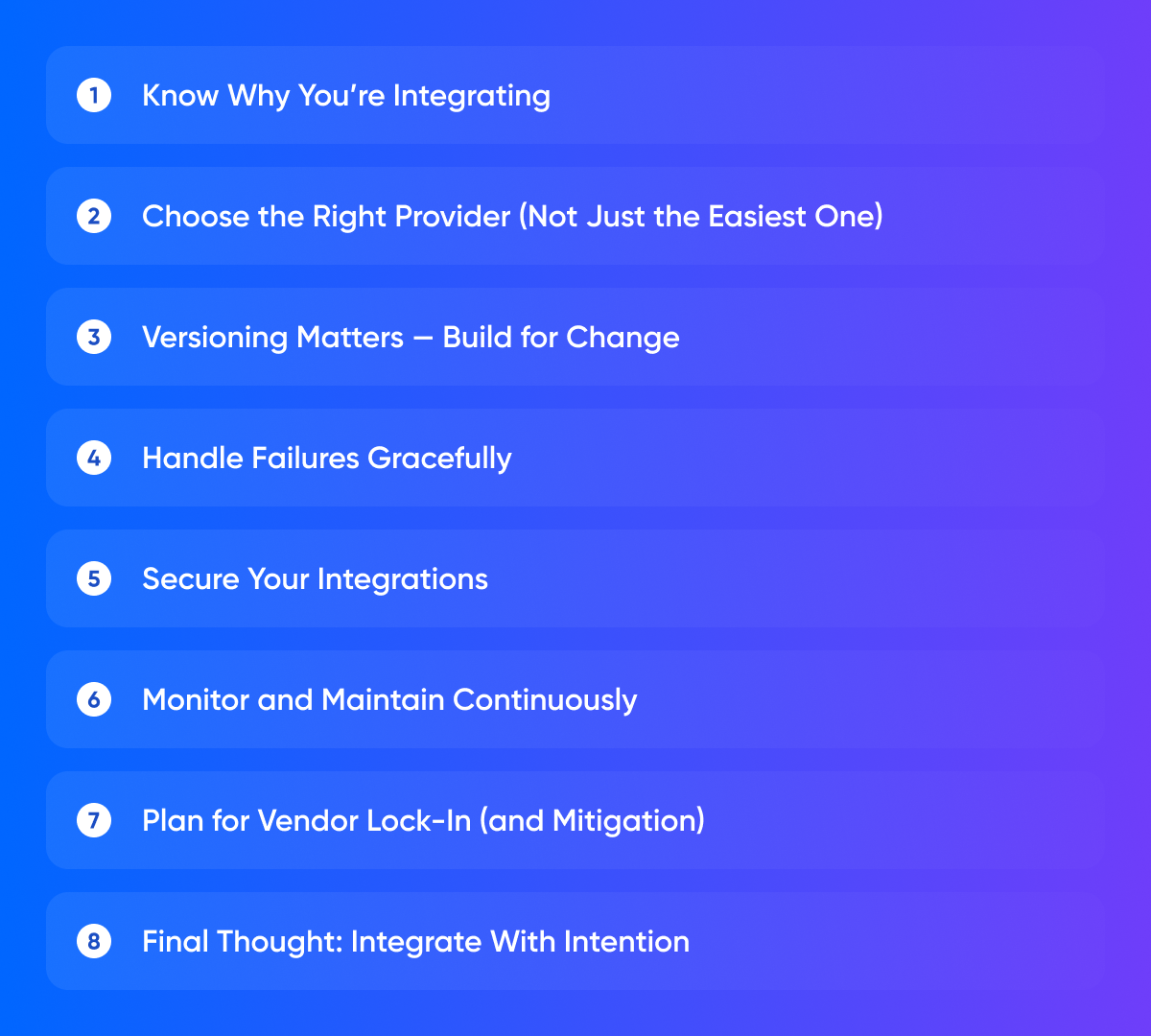Every modern app today is powered by an invisible web of APIs — payments, maps, messaging, analytics, AI, and more. APIs allow startups to build feature-rich products fast, without reinventing the wheel. But with great power comes great fragility. A sloppy API integration can introduce bugs, crash your app, slow your performance, or worse — expose you to security risks.
Done right, integrating third-party APIs can be one of the fastest ways to accelerate development, add credibility, and deliver user value. Done wrong, they become a tangle of dependencies you’re constantly cleaning up.
At Movadex, we’ve integrated hundreds of APIs into SaaS products, mobile apps, dashboards, and custom platforms. Here’s our field-tested guide to doing it right.

Know Why You’re Integrating
The first question isn’t how, it’s why. Ask yourself:
-
What’s the actual value this API adds to the user?
-
Is this core to the product, or just a nice-to-have?
-
Could we build this ourselves later if needed?
Not every API is worth integrating. Focus on those that dramatically reduce dev time, unlock user utility, or are required for business logic (e.g., Stripe for payments, Twilio for SMS, OpenAI for AI features).
Be intentional. Every dependency adds long-term cost.
Choose the Right Provider (Not Just the Easiest One)
Not all APIs are created equal. Look beyond marketing pages and evaluate based on:
-
Uptime and SLAs
-
Quality of documentation
-
Community support and sample code
-
Transparency around pricing and rate limits
Check GitHub issues, Twitter threads, and Reddit for developer experiences. If an API looks promising but has vague docs or poor support, it’s likely to cost you more in dev time than you’ll save.
Versioning Matters — Build for Change
APIs change. Endpoints are deprecated. Parameters evolve. If your product assumes an API will always work the way it does today, it’s already vulnerable.
Always check if the API uses versioning — and target a stable version explicitly. Don’t build against beta endpoints unless you’re prepared to handle churn.
Write wrappers around external APIs so you can change integrations later without rewriting your whole codebase. This one pattern saves hours down the road.
Handle Failures Gracefully
Every external call is a potential point of failure. Your app needs to expect and manage:
-
Timeouts
-
Invalid responses
-
Rate limits
-
API downtime
Never let a failed API call crash the user experience. Use fallback logic, retries with exponential backoff, and smart loading states.
If it’s a mission-critical API (like payment processing), build alerts for anomalies. Downtime should be surfaced instantly — not discovered in user complaints.
Secure Your Integrations
Security should be baked in from the first line of integration. Use HTTPS for all requests. Store API keys and tokens securely — never hardcode them into your frontend or leave them in your repo.
Use environment variables, encrypted secrets managers, or secure vault services.
If the API allows user-level authentication (like OAuth), implement proper token management, and understand scopes and refresh flows. Avoid over-permissioning and log every auth action.
Monitor and Maintain Continuously
Your integration isn’t “done” after launch. APIs need maintenance. They evolve, hit new edge cases, and occasionally break.
Monitor response times, error rates, and usage volume with tools like Postman Monitoring, Datadog, or custom logs.
Review changelogs from API providers. Subscribe to their status pages. Set reminders to test and review integrations every quarter.
Plan for Vendor Lock-In (and Mitigation)
APIs are amazing — but they’re also dependencies. If a key vendor changes pricing, sunsets a product, or gets acquired, you’re stuck.
If you’re building something core (e.g., notifications, video, AI processing), research alternative providers early. Write your code in a way that allows swapping.
If an API becomes mission-critical, consider negotiating SLAs or enterprise terms. You’re not just integrating a tool — you’re trusting a partner.
Final Thought: Integrate With Intention
Third-party APIs are one of the most powerful levers a startup can pull. They let you launch faster, test features without full builds, and lean on infrastructure built by experts.
But every integration is a bet. It adds complexity. It adds dependencies. And it becomes part of your product’s DNA.
At Movadex, we help startups navigate that balance. We design integrations that are fast, stable, secure, and built to evolve — because the best APIs don’t just connect services. They support scale.
Don’t just plug in APIs. Integrate like you mean it.




